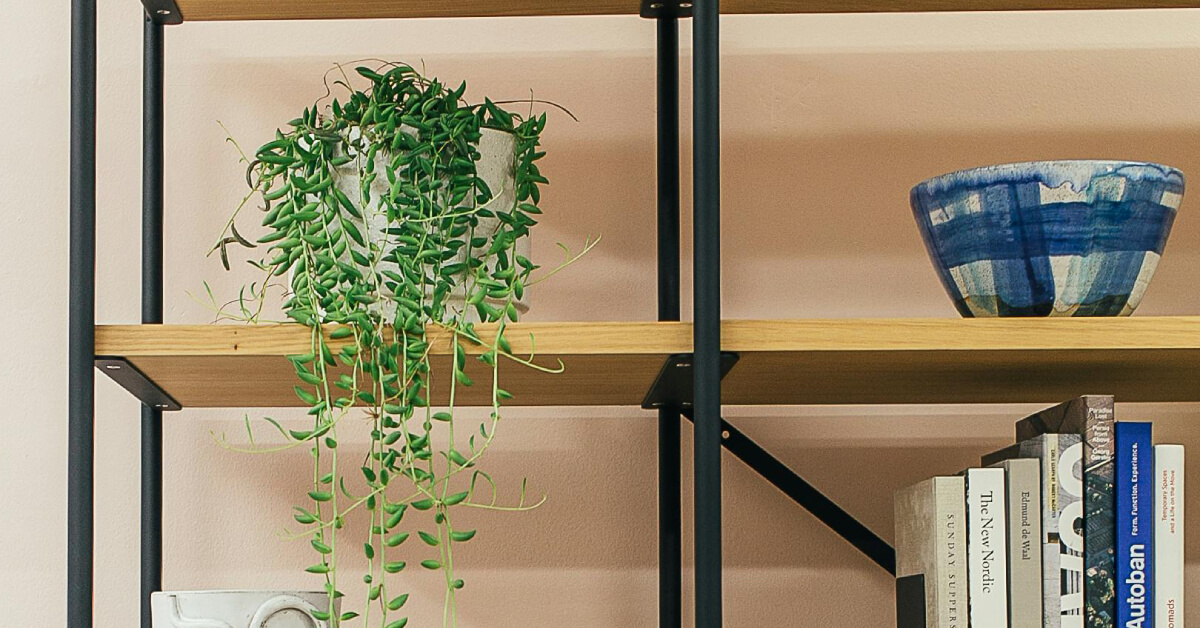A plant shelf isn’t just a decorative feature—it’s a quiet collaboration between living forms and the structure that holds them. When thoughtfully curated, a plant shelf can evoke a sense of calm, movement, and rhythm. It draws the eye gently across shapes and textures, offering a moment of stillness in a room.
In this post, we’ll explore how to create a plant shelf that doesn’t feel crowded or overly styled, but instead feels open, alive, and deeply intentional. A shelf that breathes.
Start with Purpose, Not Plants
Before choosing any greenery, ask yourself what role this shelf will play in your space. Is it a focal point in a living room? A quiet companion to your reading nook? Will it receive direct light, or does it sit in a more shaded corner?
Your answers shape not just which plants belong there, but how they should be arranged. Clarity at this stage prevents clutter later.
Consider the Rhythm of Space
A shelf that breathes relies on rhythm and spacing. Not every spot needs to be filled. Empty space—what designers call “negative space”—is just as important as the plants themselves. It allows the eye to rest and gives each plant its own presence.
Think in terms of visual flow:
- Alternate between upright and cascading forms.
- Use groupings of odd numbers (e.g., 1, 3, or 5) for a more natural feel.
- Let height and volume vary—but avoid extremes that break cohesion.
This creates a shelf that unfolds slowly, rather than demanding attention all at once.
Choose Plants That Coexist
A curated shelf isn’t a random collection. It’s a considered mix of forms, textures, and tones. Choose plants that will thrive in similar conditions and complement each other visually.
Some ideal combinations:
- Trailing vines (like pothos, philodendron, or string of hearts) to soften shelf edges.
- Structural plants (like sansevieria or rubber plant) to bring verticality.
- Low, full plants (like peperomia or prayer plants) to ground the arrangement.
Avoid overcrowding. Let each plant breathe, both for aesthetics and airflow.
Pots Are Part of the Story
Planters are not background—they’re part of the composition. A good rule of thumb: keep your materials simple and cohesive. Terracotta, matte ceramics, and neutral tones let the plants speak. A few well-placed textures (woven baskets, raw clay, glazed pots) add warmth and variety without noise.
Consider:
- Varying heights and diameters while maintaining visual balance.
- Keeping a limited color palette—e.g., earth tones or whites with one accent color.
- Mixing in natural materials like wood or stone to echo the organic theme.
Light as a Living Element
Light is not just a condition—it’s a design partner. Observe how natural light moves across your shelf throughout the day. Use it to your advantage:
- Let light filter through leaves of sparse plants.
- Use shadows to create depth and change.
- If natural light is low, consider adding a subtle grow light with a warm hue to maintain softness.
Plants shift subtly as they reach for light. Allow your shelf to shift with them.
Integrate Breathing Space
Just as in meditation, space is not empty—it’s alive. Leave gaps. Let a vine spill over a ledge. Leave one end of the shelf bare, or dedicate a corner to a single, sculptural plant.
This space gives the arrangement a sense of openness. It allows your plants to grow without constraint and keeps the visual experience calm and grounded.
Add Gentle Touches
You don’t need to add much else—but a few objects can add depth:
- A smooth stone, piece of driftwood, or handmade bowl.
- A small book stack with calming colors.
- A candle or diffuser, subtly suggesting atmosphere without clutter.
These touches act like punctuation—quiet pauses that reinforce the rhythm of the shelf.
A plant shelf that breathes is an invitation—not just to nature, but to pause. It’s a place where light, life, and form come together in quiet conversation. In a world that often pushes us toward more, your shelf can be a space that whispers: enough.
Not as a trend. Not as decor. But as a living reflection of balance.

